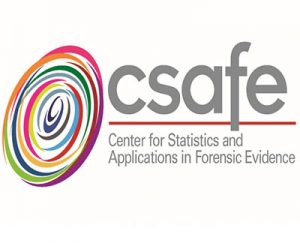Karl Vinson was convicted in 1986 for breaking and entering as well as raping a nine-year-old child. The victim had positively identified Vinson as her attacker and knew Vinson prior to the attack. No evidence was presented that demonstrated any reason for the victim to lie about her identification. Vinson also produced evidence of an alibi, but the veracity of this defense was called into question. In addition, experts examined a blanket from the crime scene which had contained a wet spot. Samples were taken from the wet spot where the presence of a single sperm was found. The victim was found to be type O and a secretor, meaning she was part of the 80% percent of the population in which a blood type can be determined from other bodily fluids. Vinson was found to be a non-secretor, meaning he was part of the 20% of the population in which a blood type cannot be determined from other bodily fluids. Experts from the prosecution testified that the sample from the blanket contained only Type O fluids, which is consistent with the sample being from the victim. If this analysis was correct, the contributor of the sperm was either a Type O secretor or a non-secretor, or else the presence of A, B, or AB would have been detected in the sample.
In 2009, Vinson sought to re-test the blankets, however, he had learned that the police had destroyed the evidence. Through re-testing of his blood, it was determined that Vinson was Type AB and a secretor, meaning the results were inconsistent with him being a contributor. Vinson sought appellate relief in state court on the basis of various ineffective assistance of counsel claims as well as actual innocence claims. However, he was denied, in part because the court did not agree with his ineffective assistance of counsel claims and believed the victim’s identification of Vinson was sufficient for the jury to find Vinson guilty. (The prosecutor who opposed these appeals stated in court documents that “Science does not trump the testimony of individuals.”)
Subsequently, Vinson sought federal habeas relief also based on ineffective assistance of counsel and actual innocence claims. The court rejected his claims pursuant to 28 U.S.C. § 2244(b) which states that a second or successive habeas application shall be dismissed unless:
“(A) the applicant shows that the claim relies on a new rule of constitutional law, made retroactive to cases on collateral review by the Supreme Court, that was previously unavailable; or
(B)
(i) the factual predicate for the claim could not have been discovered previously through the exercise of due diligence; and
(ii) the facts underlying the claim, if proven and viewed in light of the evidence as a whole, would be sufficient to establish by clear and convincing evidence that, but for constitutional error, no reasonable factfinder would have found the applicant guilty of the underlying offense.”
Vinson v. Mackie, No. 14-CV-14542, 2016 WL 7100249, at *4 (E.D. Mich. Dec. 6, 2016)


Leave a Reply